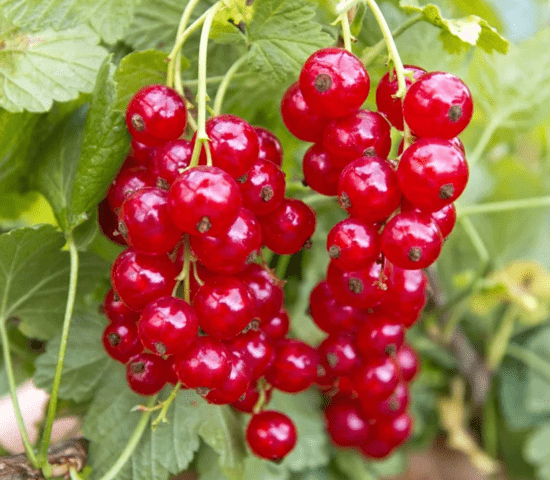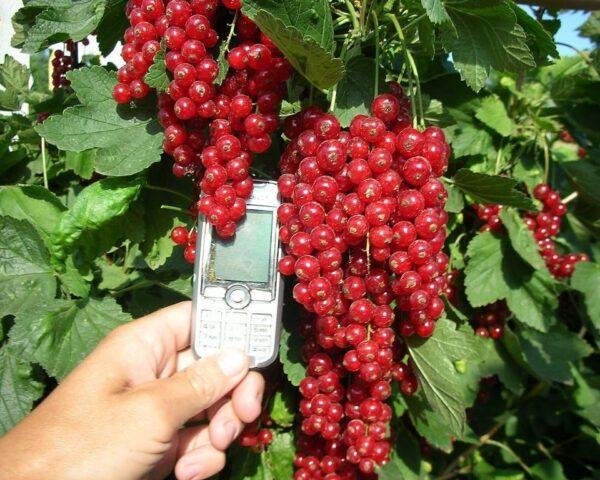Content
Red currant Rondom is found in many orchards and vegetable gardens. The variety is appreciated for its yield and strong immune system. Proper care and planting will provide the bush owner with large and tasty berries.
Breeding history
The variety was obtained in Holland. When breeding the culture, the Versailles red currant was used as a basis. Since 1985, the authors of the plant have put the Rondom variety for state testing. Currants have been entered into the register since 1995 in the Central and Volga-Vyatka districts. But more often the whole plant can be found in Europe. On the territory of Russia, currants are grown mainly for personal purposes in plots.
Description of the red currant variety Rondom
Perennial shrub is vigorous, with a weak branch. Its shoots are more pressed to the center, stretched upwards compared to other types of currants.
According to the description of the variety and reviews with a photo, the growth of the culture reaches 1.5 m.Rondom red currants are distinguished by intensive growth rates at a young age. As soon as it begins to bear fruit, the rate of shoot formation decreases.
The branches of the Random red currant are strong and thick. Annual shoots extending from the base of the shrub gradually replace the old ones, thereby renewing the plant.
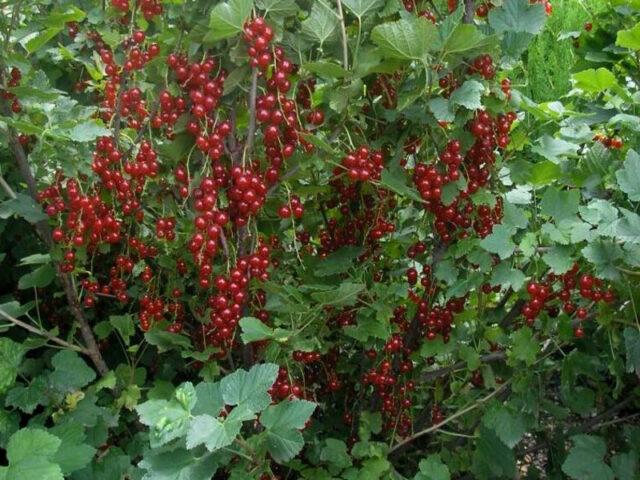
The leaves of the Rondom variety are dark green in color, jagged at the edges, palm-lobed in shape, leathery and dense to the touch
Flowers, blooming in spring, medium-sized, light green with a pink tone, collected in inflorescences in the form of brushes.
The variety is high-yielding and pleases with long, dense clusters with berries during the fruiting period. Each of them contains 16-17 pieces. The berries are large, even, similar in size. Their surface is dark red, shiny. The pulp is juicy inside, with a pronounced aroma and sweet and sour taste. According to the tasting assessment, the red currant variety Rondom received 4.6 points. The mass of each berry reaches 0.7 g. Ripe fruits contain a large amount of ascorbic acid, not less than 67 mg.

As the currant ripens, it does not crumble from the bush, it has good transportability
Characteristics
Studying the requirements for planting and the characteristics of growing a crop is an integral step in choosing a variety. Red currant Rondom shows its maximum qualities if it is provided with proper care.
Drought tolerance, winter hardiness
Red currants are relatively good for dry periods. The plant is moderately demanding on moisture. This is due to the strong root system. But these qualities are not applicable to young and ailing plants: without sufficient nutrition and moisture, seedlings will not survive.
The level of productivity also decreases in shrubs planted on a hill. With a regular lack of water, the growth of currants decreases, it becomes less winter-hardy.
If the soil is waterlogged or the seedling is placed in a lowland, then there is a high risk of frost damage to young shoots. With proper care, the variety has good winter hardiness.The optimal climatic zones for red currants are the territory of Ukraine: from Transcarpathia to Lugansk and Crimea. In Russia, when planting a seedling, weather conditions should be taken into account.
Pollination, flowering period and ripening times
The variety is late-ripening; gardeners in most regions start picking berries only in July. Flowers appear on the shrub in the last weeks of April.
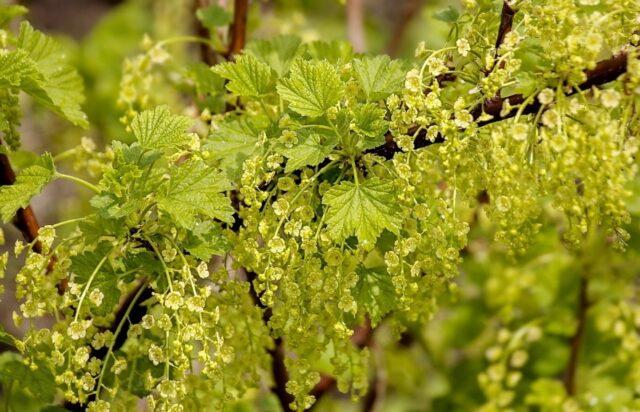
Depending on weather conditions, Rondome red currant buds can be seen in mid-May
Productivity and fruiting, keeping quality of berries
From one shrub, you can collect from 15 to 25 kg of ripe fruits. Tear off the brushes in dry weather. During the rainy season, it is better to postpone the harvest, the berries do not crumble from the crop.
If currants need to be transported over long distances, then the brushes should be cut off slightly immature. Competent collection will allow you to keep the crop for 2-3 weeks without the need for processing.
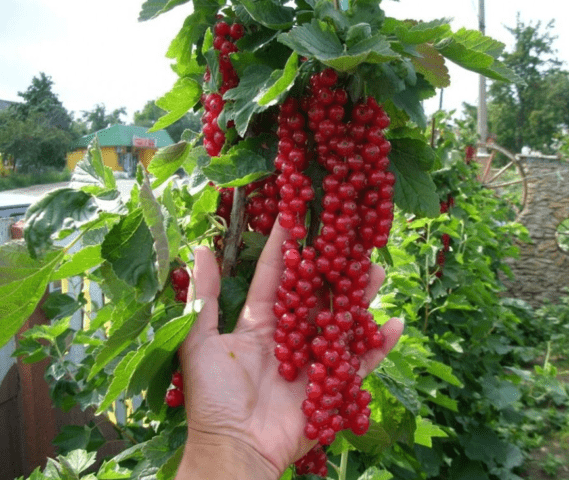
It is recommended to collect brushes from the bush, and not berries separately: the skin of the currant is thin, easily damaged
The crop can be processed in various directions: frozen, used for conservation, sold for sale. Delicious red currant Rondom makes compotes and jam. The use of berries and fresh is possible.
Disease and pest resistance
If you do not treat shrubs from pests in a timely manner, then a sawfly, aphid, a tick can destroy the red currant with Rondom. Among the diseases, rust and powdery mildew are dangerous for the plant.
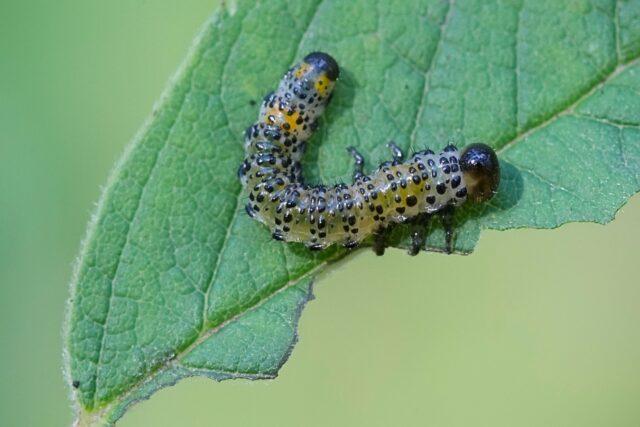
The sawer larva destroys leaf plates and young shoots, the seedling dies from lack of nutrients
Aphids that drink juice from a bush are no less harmful. First of all, leaves are affected. Outwardly, this is manifested by a change in their color, they become brown, bumpy, often curl and fall off.

Outwardly, the aphid looks like a translucent small bug that lives on the inside of the leaf.
It is more difficult to find a kidney mite on a currant. Despite its small size, the pest is very dangerous for the shrub. The mite destroys the kidneys, which leads to the premature death of the red currant Rond. If processing is not carried out in a timely manner, then the insect can spread to neighboring plants.
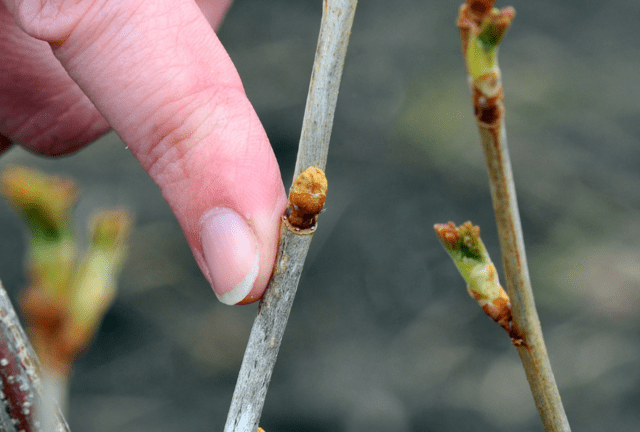
You can suspect a pest when examining a bush: damaged buds are large in size
In early spring, when the buds are blooming, the currants should be treated from aphids and a sawer with Aktellik or Angio. The drug Aktara in combination with Tiovit Jet is effective against ticks. During fruiting, to protect against rust and powdery mildew, the shrub must be treated with a mixture of Actellic and Topaz.

It is easy to detect signs of the disease on red currants with Rondom: brown dots appear on the underside of the leaf
As rust progresses, young shoots dry out. The leaf plates turn completely brown, curl and fall off.
The appearance of white bloom on the shrub is a sign of powdery mildew. The fungus damages leaves and young shoots. The culture slows down growth, bears poor fruit and becomes less hardy.
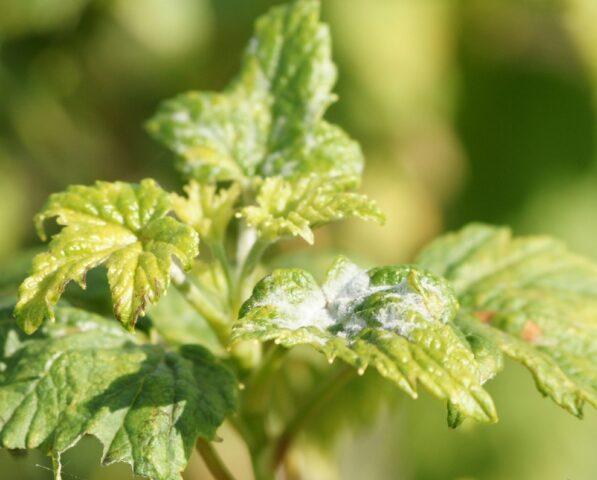
Next year, a new crown affected by powdery mildew will not develop correctly
Advantages and disadvantages
The Rondom red currant is recognized as the standard in Europe. The culture is valued for its yield and large-fruited.
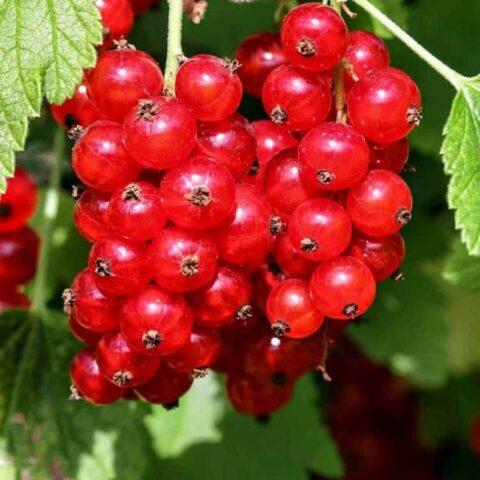
The berries of the variety are aromatic, with a pronounced sourness, about the same size
Advantages:
- fruits do not fall off the branches;
- good transportability of currants and keeping quality;
- winter hardiness;
- strong immune system.
Disadvantages:
- the shrub is difficult to propagate with lignified shoots;
- to obtain a good harvest, it is necessary to adhere to agrotechnical rules.
Features of planting and care
Prepare the soil before all the manipulations: remove weeds, dig up with the addition of manure and compost.The depth of the pit should be at least 30 cm, and the width from 0.5 m. The size of the seedling should be taken into account: its roots need space.
Landing Algorithm:
- Prepare the hole for planting.
- Remove the seedling from the container, transfer it to the hole, cover the roots with earth.
- Form a near-trunk circle.
- Sprinkle the red currants generously with the Rond.
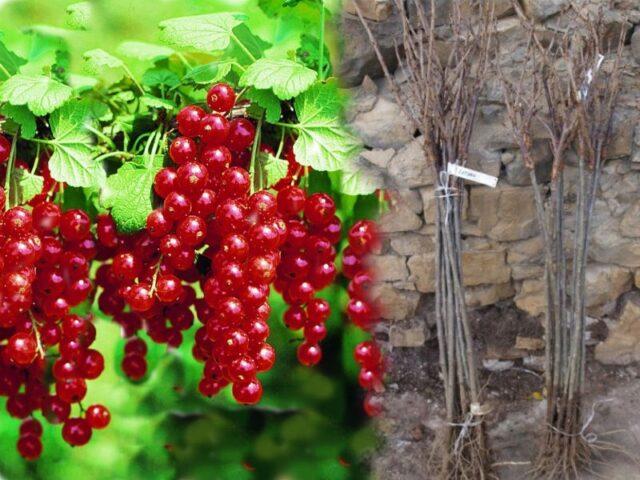
The success of rooting and further fruiting depends on the quality of the seedling, it must be characterized by a strong root system
With the further cultivation of the variety, it is necessary to adhere to agrotechnical rules. Watering is carried out every 5-7 days using three buckets of water. The soil under the bush must be mulched using straw or cardboard.
After planting, the red currants need to be fed with Rond. To do this, nitrogen should be added to the soil during the first two weeks of May. The second portion of the fertilizer is used in mid-June. If there is an excessive growth of the aboveground part, then next year the amount of nitrogen fertilization should be reduced.
After planting in open ground, the first pruning is carried out. Leave Rondom on red currants no more than 4-5 large basal shoots. In subsequent years, the shrub must be added 2-3 branches. An adult plant should have up to 12 well-developed branches of different ages.
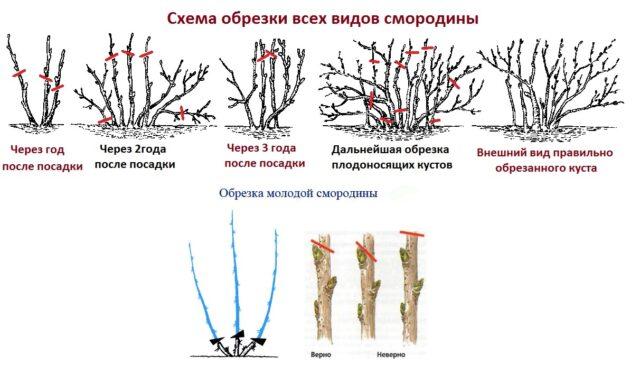
Depending on the purpose, pruning should be carried out in the spring and autumn, before bud break and before the onset of frost
Conclusion
Red currant Rondom is a large-fruited and high-yielding variety. The plant is frost-hardy, but light-requiring, bears fruit abundantly with proper care. The shrub has a strong immune system but needs protection from pests and diseases.
Reviews with a photo about red currant varieties Rondom
